Decline and Fall of the Romans in Andalucia over a period of over 200 years, the Romans left Andalucia
By Nick Nutter | Updated 8 Mar 2022 | Andalucia | History |
Login to add to YOUR Favourites or Read Later
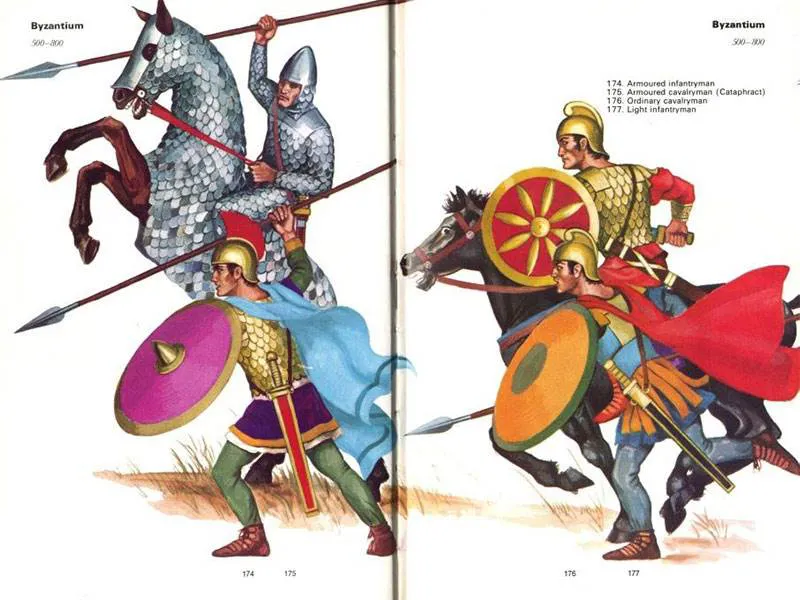
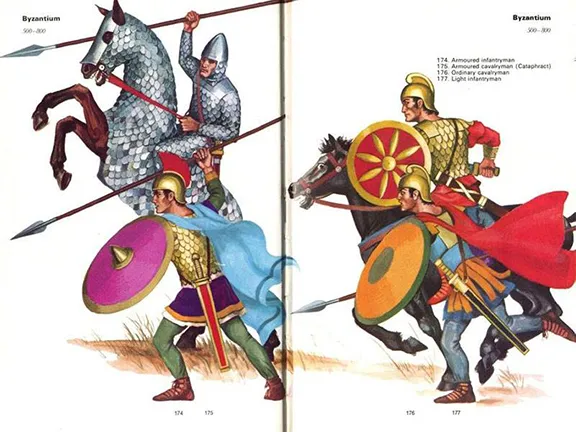
Byzantine army 500 - 800 AD
Our very abbreviated history of the Romans in Spain, and Andalucia, in particular, has brought us to about 180 AD. Following the death of Marcus Aurelius in that year, Roman influence in Andalucia declined until 409 AD when the Vandals supplanted them.
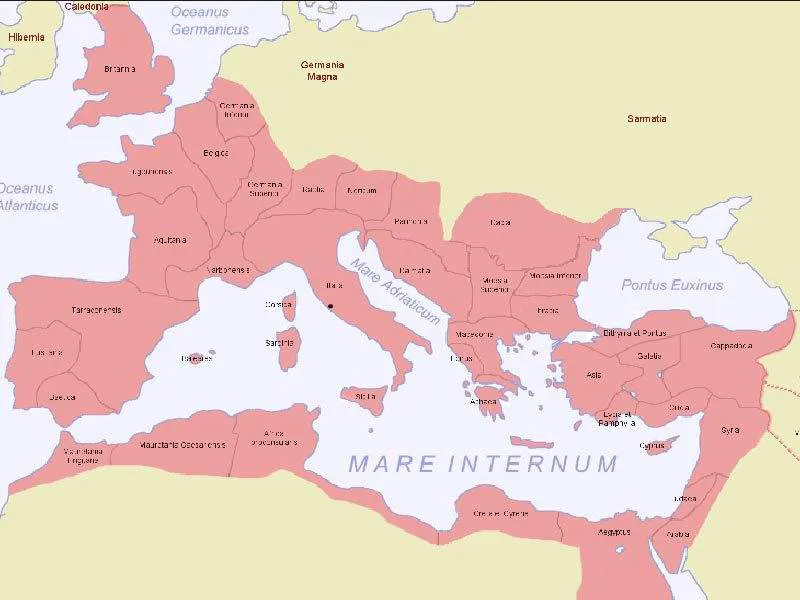
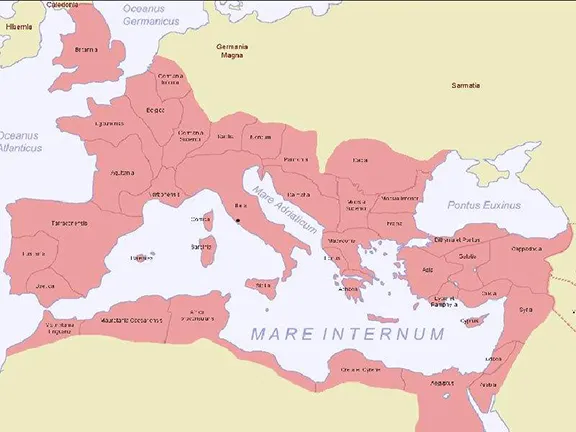
Greatest extent of Roman Empire
This period of over 200 years is, depending on which authority you consult, the period of the decline and fall of the Roman Empire, a term first coined by the historian Gibbon in 1776. Since then, over 200 theories have been put forward as to why the Western Roman Empire failed. The problem is a lack of information, mainly economic data, from that period. In short, nobody knows why the Empire unravelled as it did. However, we are reasonably sure of the events that occurred and we can be sure that there was no single reason.
From about 165 AD, for about twenty years the Antonine Plague swept through Europe in successive waves, eventually killing about half the population in Roman-occupied Europe. The death toll put a massive burden on the remaining half of the population because it had to continue supplying men for an army that had to increase in size. The reduced population also had to feed and finance the military and run the administration. Population levels in Europe continued to decline into the 7th Century so, even after the Antonine Plague, it took time for the population to recover.
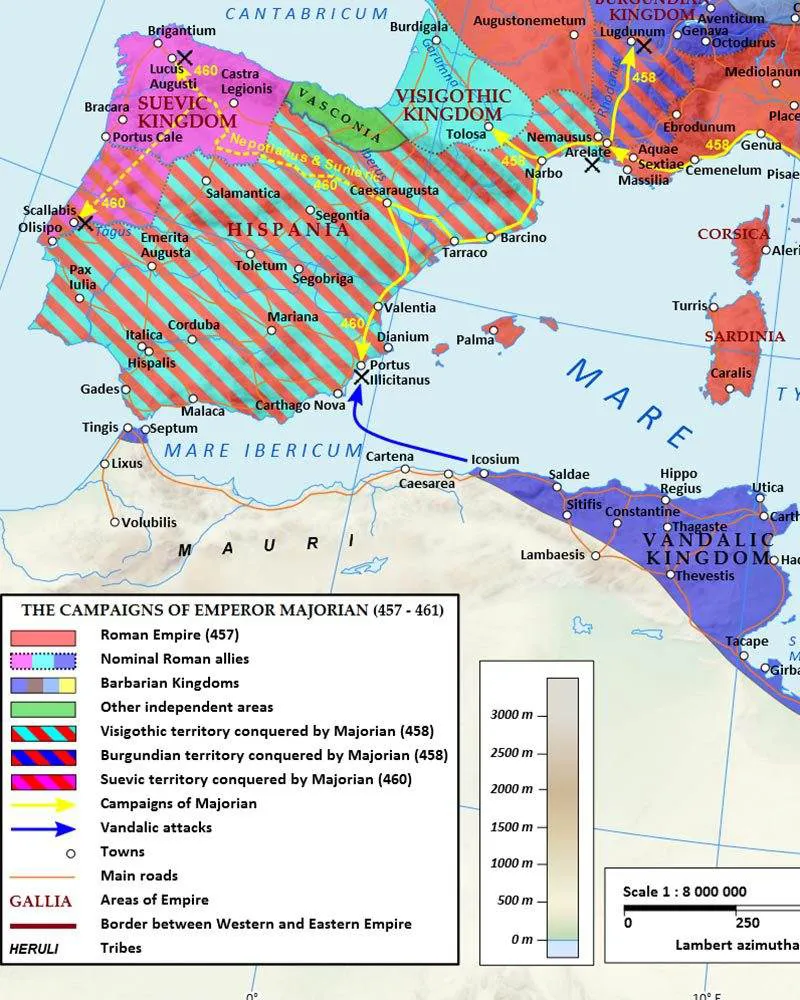
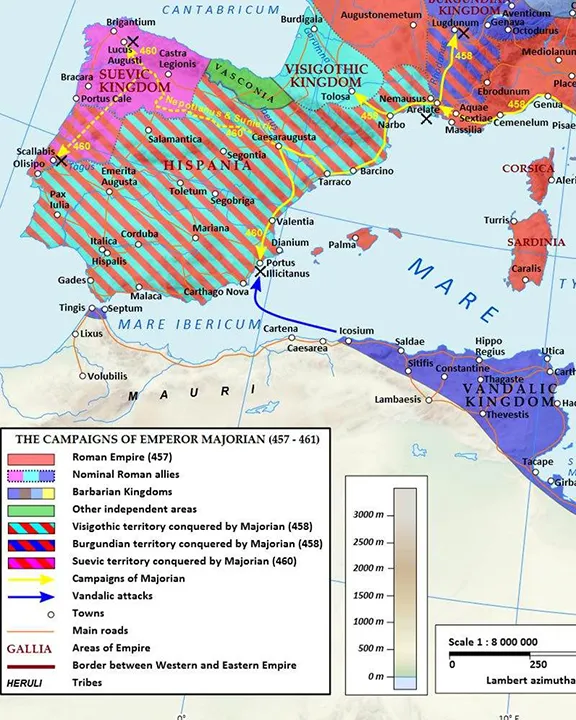
Campaigns of Majorian
Then, in 226 AD the Sassanid Empire emerged in the area now known as Iran and started to push the Romans back from the Euphrates, large parts of Armenia and southeast Turkey. It took the Romans fifty years to deal with this threat. They did so by taking the regional taxation income from the western provincial towns and cities, including those in Andalucia, and committing about 25 % of their entire military might to the problem. The Romans also hired vast numbers of foreign mercenaries, who were paid for by the purloined taxes. This taxation policy caused a long term impact locally because the officials in the west, not threatened in any way by the troubles in the eastern part of the Empire, lost all incentive to invest and develop the local infrastructure. Public buildings started to suffer from lack of maintenance and any new building was much more modest than that seen during the Pax Romana period.
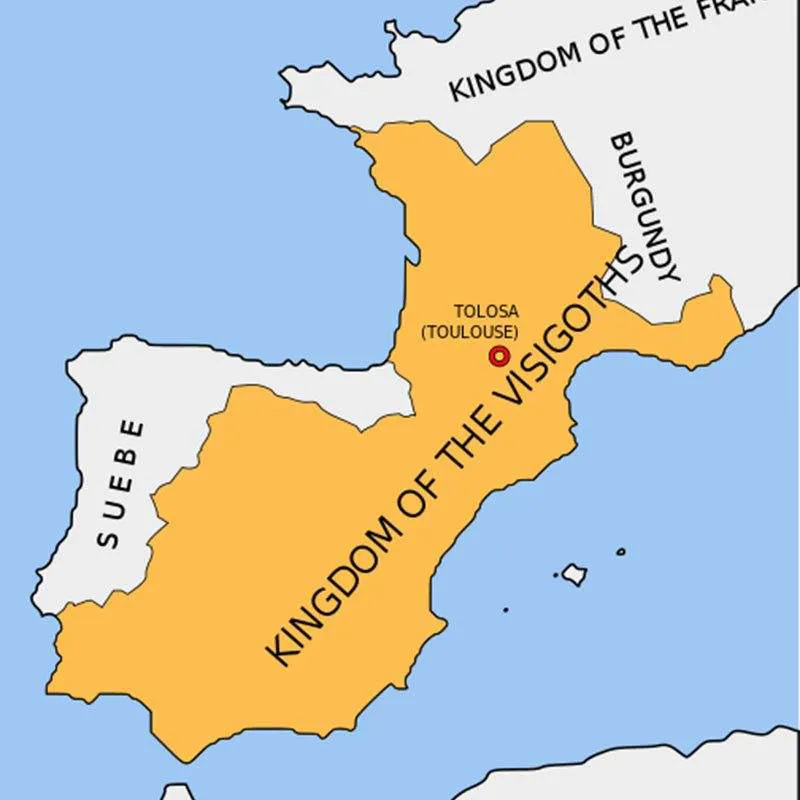
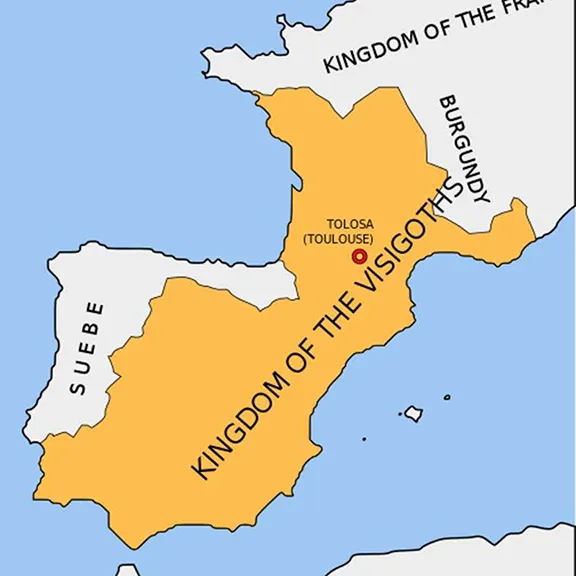
Visigothic Kingdom
Meanwhile, the Germanic tribes on the Empire’s northern border had been increasing in material wealth since the first century AD due to their contact with the Romans. An upper class started to emerge who controlled more significant portions of the population, who, in turn, fused into chiefdoms that made much more formidable foes than single tribes. Collectively called the Goths, the tribes coalesced into several chiefdoms including the Visigoths, Vandals, Alans and Suevi.
The Goths were in turn threatened by the Huns who were active around the Black Sea area to such an extent that in 376 AD the Goths invaded the Empire to escape the Huns. In reality, the ‘invasion’ was much more a migration since the Goths brought everything with them with no intentions of going back. Similarly, in 406 AD, another wave of migration occurred, this time across the Rhine, as a result of another period of expansion by the Huns.
These Gothic migrants were from the Suevi, Alans and Vandal chiefdoms and they immediately ravaged Gaul. It is difficult to imagine today just what these people were like. They were warlike, even amongst themselves, they were transients, never staying in one place longer than necessary and they travelled light. Whole chiefdoms, men, women, children and animals roamed across Europe displacing, usually forcibly, the local population.
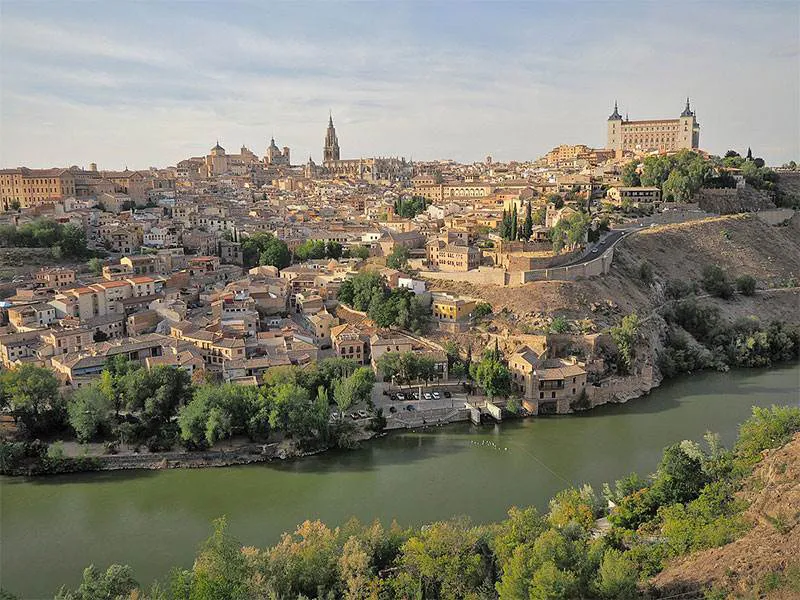
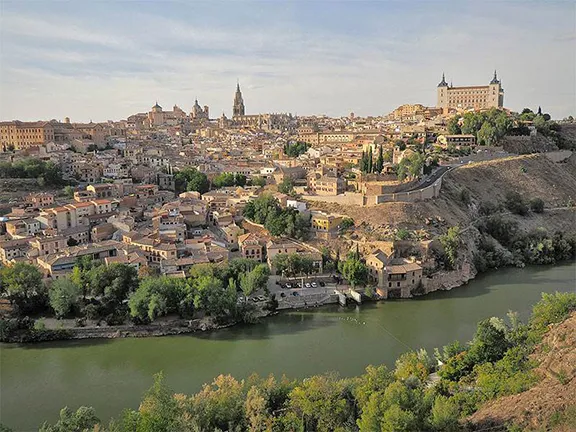
Visigothic Capital of Toledo
Meanwhile, one group of Goths, the Christian Visigoths, had allied with Rome and supplied mercenary armies to fight for Rome. This was not an unusual occurrence. First, as the Empire expanded, Rome needed foreign troops to adequately garrison new territory and that need increased after the plagues and again after the Sassanid threat and yet again after the first Gothic migrations. It was the Visigoths that drove the Vandals, Alans and Suevi out of Gaul into Hispania. The Alans and Vandals occupied what is now called Andalucia while the Suevi stayed in the north.
The Roman Emperor Honorius commissioned Athaulf the Visigothic king to restore order in Hispania. Athaulf’s wife, Placidia, by the way, was Honorius’s sister, which shows how allied they had become. The Visigoths entered Hispania in 415 AD and by 429 had made life so uncomfortable for the Vandals and Alans that they decided to look for easier pickings in North Africa. They sailed from Carteia.
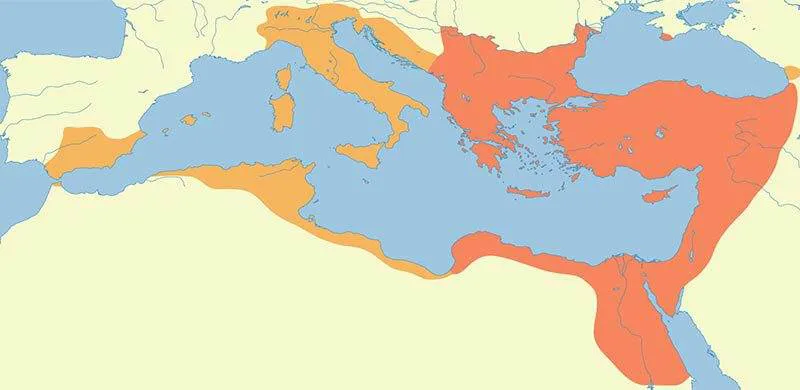
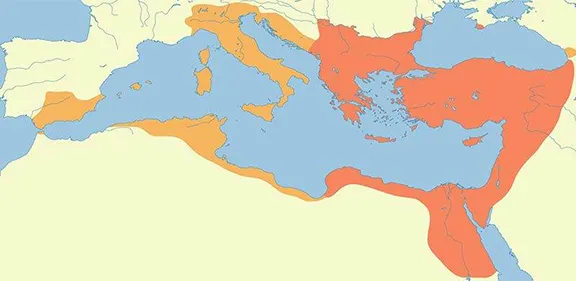
Byzantine Empire
The Visigoth rule in Spain was briefly interrupted twice. On the first occasion by Emperor Majorian. From his base in Rome Majorian tried to restore the crumbling Roman Empire. In 458 he arrived in Hispania and by 460 had largely retaken Spain. However, Majorian was assassinated in 461 and his successors were not up to the task of retaining the territory Majorian had regained. By 476 it was all over. The Western Roman Empire was gone.
In 484 the Visigoths established Toledo as their capital in Hispania. Although Romanised, the Visigoths did not have as developed a cultural system as the Romans. It is often thought that by this period, the Romans had left Hispania. Indeed, their armies had gone but many Roman families had been in Hispania for generations and had survived the deprivations of the Vandal period and it was those people who ran the civil administration. Latin continued as the official language. Education and government became the responsibility of the church bishops who answered to the pope.
So, while the administration carried on, there was still an educational system, albeit strictly controlled by the church, and a degree of government, the technical infrastructure started to crumble. The engineers, part of the army, had left with the military leaving behind nobody with the necessary skills to maintain systems installed by the Romans.
That could have been the end of the Romans in Spain, but in 552 AD they were to return.
The Eastern Roman Empire or Byzantine Empire, with its capital city at Constantinople, had survived the disintegration of the Western Roman Empire and was as greedy for territory as its predecessor. The Byzantine Empire expanded to its greatest extent in the mid 6th century to include much of the territory held by the Western Roman Empire plus a strip of land in north Africa called Mauritania. The Vandals that had occupied north Africa in 429 found themselves displaced by Romans in 534.
In 550 two revolts against the Visigoth rulers took place in Spain, one by the Roman Catholics in Cordoba resulted in the Visigoth king, Aguila, retreating to Merida. Following Aguilla’s defeat at Cordoba, a usurper to the Visigothic throne, Athanagild, met Aguila in battle and took Seville in 551 AD. Seville was the capital of Baetica. Athanagild ruled as king from Seville in opposition to Agila. Athanagild sometimes needed assistance.
According to Isidore of Seville in his ‘History of the Goths’, Athanagild asked the Byzantines, who occupied territory just across the Gibraltar Straits, for assistance against Agila. In 552 a Roman force landed at the mouth of the Guadalette river in the vicinity of Puerto de Santa Maria. For two years, they expanded the territory they held into a coastal strip from the Portuguese border to north of Cartagena. This territory was consolidated in 555 by a further Roman army that landed at Cartagena. The Byzantines called it Spania and were to remain for another seventy years until they were removed by Visigoths who still held the vast majority of Spain.
The Romans had been, conquered, stayed awhile, left, returned and gone again.